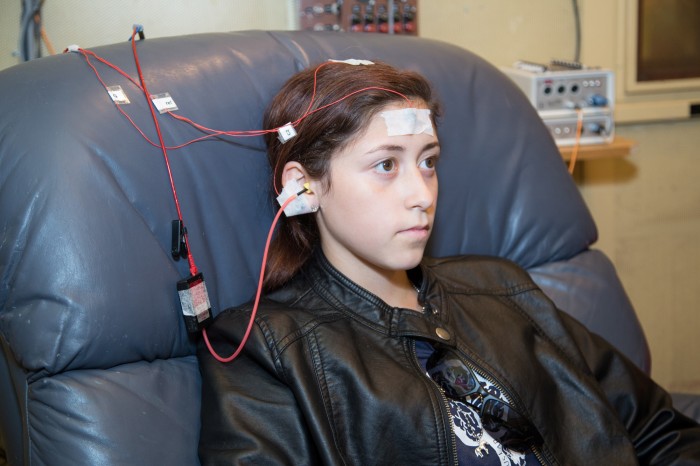Hearing Tests Could Be Vital Concussion Indicator

A test that measures the brain’s response to speech could provide a new way to diagnose concussions and track patients’ progress toward recovery, a small study suggests.
Developed by researchers at Northwestern University, the test is meant to detect neural activity when patients are exposed to auditory stimuli. Since one of the common side effects of concussion is a compromised ability to make sense of sound, researchers believe a blow to the head temporarily disrupts the way the brain processes and hears speech.
Led by Nina Kraus, a professor and director of Northwestern’s Auditory Neuroscience Laboratory, scientists built a test using electrodes to measure the electrical signals generated in the brain. The team placed three electrodes on children’s scalps while the subjects listened to several minutes of various spoken sounds designed to assess their ability to understand speech and distinguish between certain sounds.
Researchers observed differences in neural response among children who suffered concussions in the past five to 56 days compared to children without concussions. Children with concussions had reduced reactions to the pitch of the recorded sounds than the control group. The test was able to correctly identify 18 out of 20 study participants with a concussion and 19 out of 20 healthy controls. As the children recovered from their head injuries, their ability to process pitch improved, the researchers reported.
One limitation of the study was that it did not measure participants’ baseline sound processing before a concussion, says Marc Nuwer, a clinical neurophysiologist and professor of neurology at UCLA School of Medicine. That would have helped determine whether the patterns in a subject’s auditory processing were different than normal. Nuwer says injuries other than concussions, medications, and fatigue can also affect the brain’s ability to process sound.
While the initial results are interesting, such a test may not be practical in a doctor’s office or in the field. The equipment needed to conduct the test—an electroencephalogram machine—is expensive, and the analysis of results is complicated.
Kraus says her team will be recruiting more study participants to try the test in a bigger population.
Traumatic brain injuries account for more than two million emergency room visits in the United States each year and contribute to the deaths of more than 50,000 Americans, according to the U.S. Centers for Disease Control and Prevention. A significant percentage of these injuries are considered to be mild ones, which include concussion. Currently, doctors rely on symptoms to diagnose concussions. Computerized tomography scans can rule out more serious brain injuries, but they can’t detect concussion.
Increased worries about long-lasting brain injury in both youth and professional sports players have resulted in more public awareness of concussions and an interest in developing better diagnostic methods. Concussions in children are particularly difficult to diagnose.
Keep Reading
Most Popular
Large language models can do jaw-dropping things. But nobody knows exactly why.
And that's a problem. Figuring it out is one of the biggest scientific puzzles of our time and a crucial step towards controlling more powerful future models.
How scientists traced a mysterious covid case back to six toilets
When wastewater surveillance turns into a hunt for a single infected individual, the ethics get tricky.
The problem with plug-in hybrids? Their drivers.
Plug-in hybrids are often sold as a transition to EVs, but new data from Europe shows we’re still underestimating the emissions they produce.
Stay connected
Get the latest updates from
MIT Technology Review
Discover special offers, top stories, upcoming events, and more.